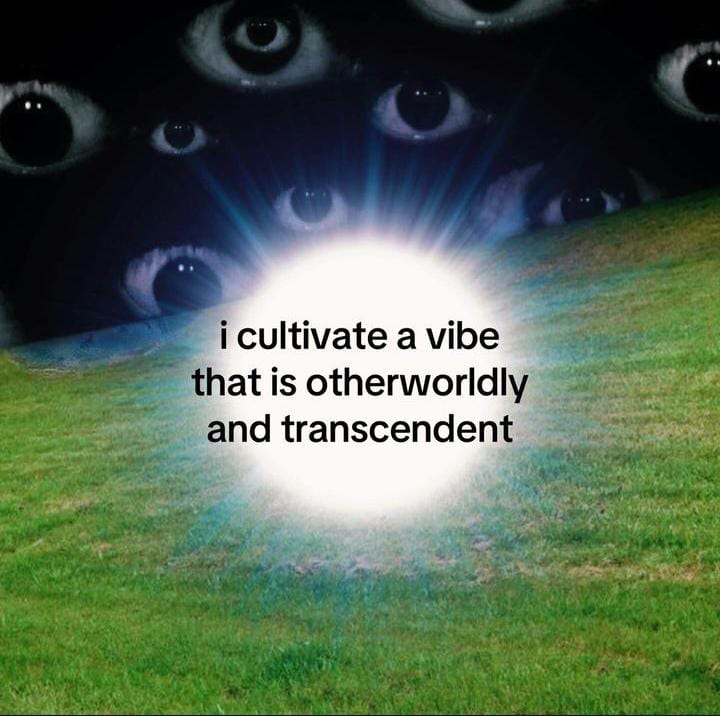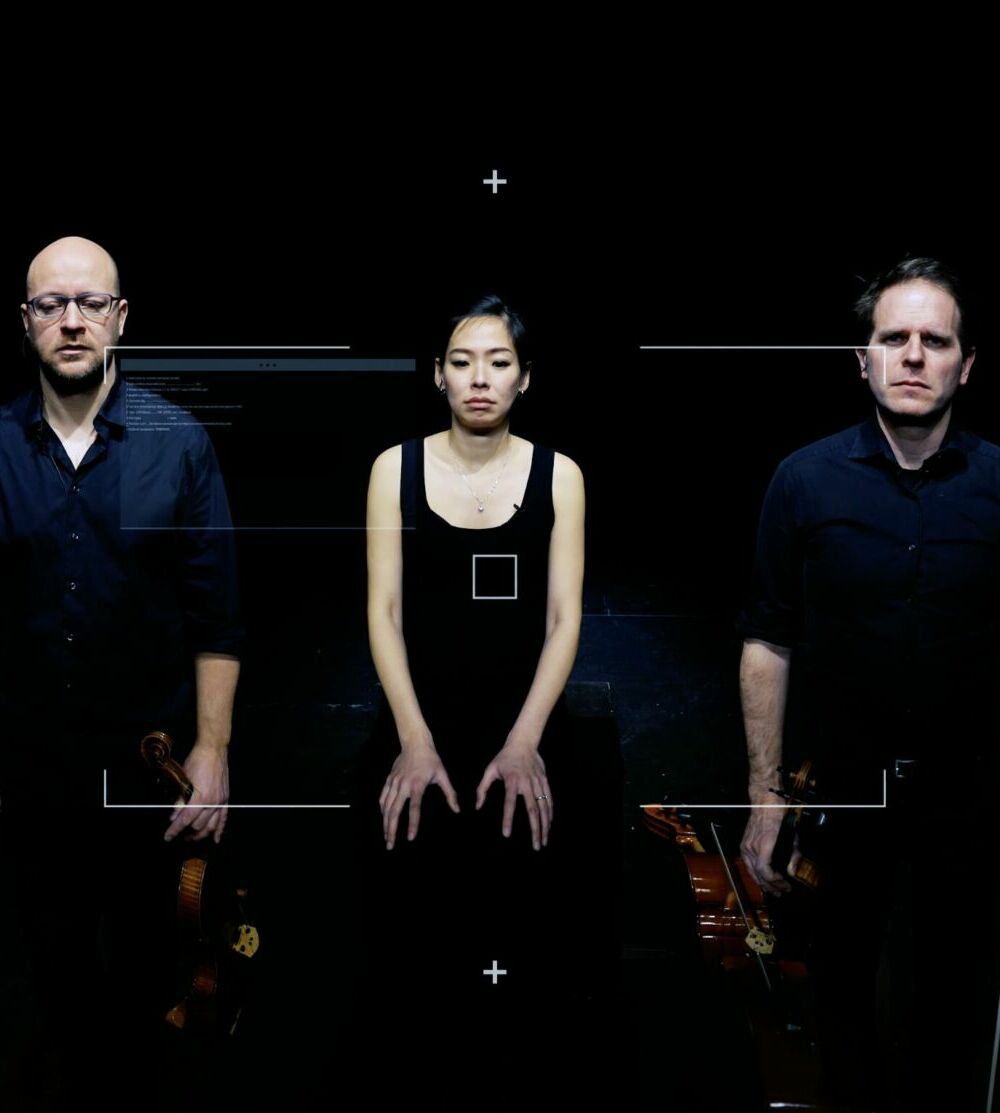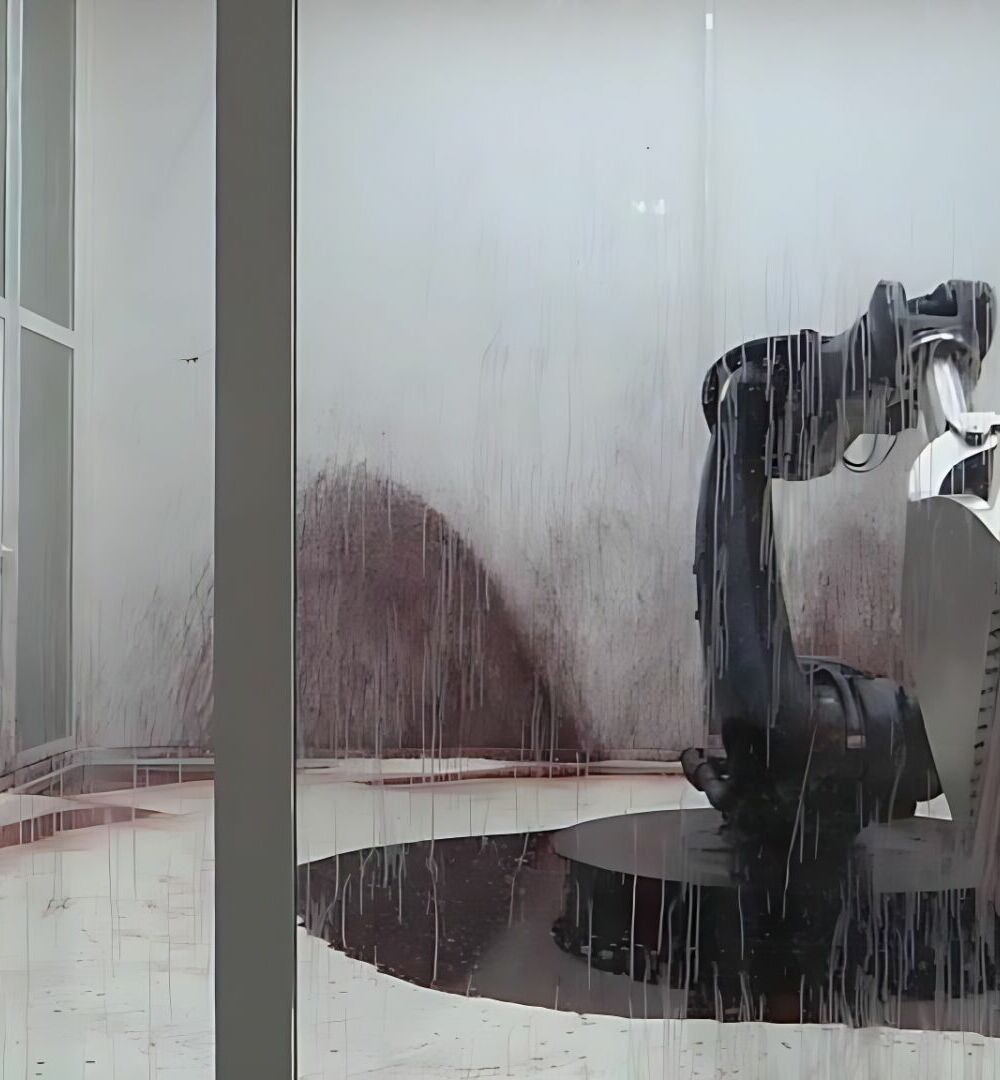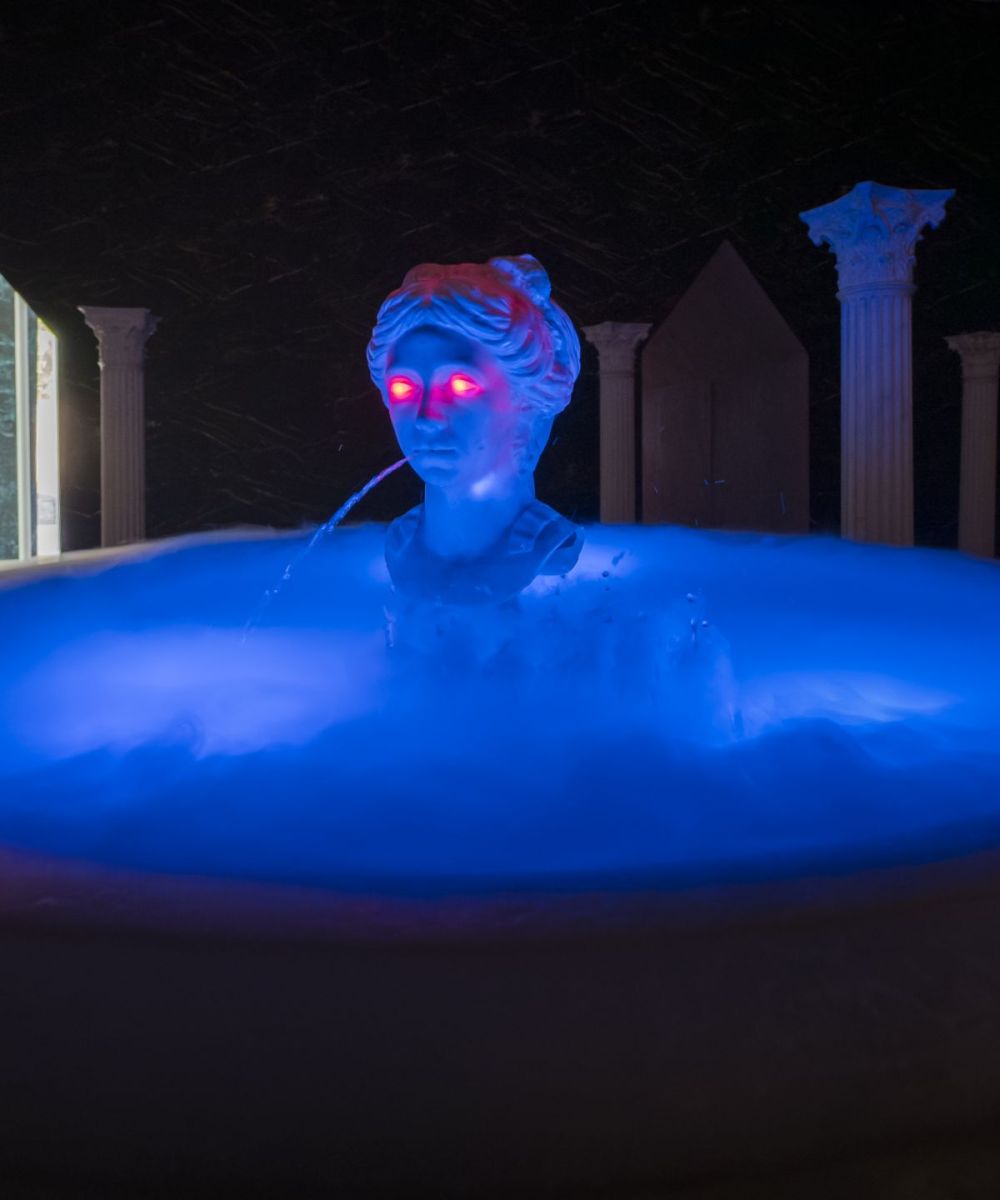The saturated Art of Guerreiro do Divino Amor
by Lavinia Elizabeth Landi
Lying stretched out along the gentle curve of the circular bench, the viewer looks ahead, then moves his gaze upwards, left, and then right, not to miss a single image or text of the rapid and noisy animations that cover the domed ceiling of the planetarium. There is a feeling of familiarity, needled by a latent desire of non-involvement while images from popular culture appear and disappear, penetrating the subconscious, Visitors enter the first of the two immersive works created for the Swiss pavilion at the 60th Venice Art Biennale, by the artist Guerreiro do Divino Amor, and curated by Andrea Bellini.
After passing a fountain featuring a central sculpture of the rotating, double-faced head of Helvetia, they reach the pavilion planetarium showing a video-film entitled The Miracle of Helvetia, an allegorical mise-en-scene depicting Switzerland, portrayed as a kind of promised land where nature and technology, capitalism and democracy coexist in a state of perfect and surreal equilibrium. “Capitalism devours and regurgitates everything in the form of images, finally destroying itself”, comments the Swiss-Brazilian artist, who has been engaged on this long-term work, Superfictional World Atlas for twenty years: “potentially, a never-ending project”, he adds.
Two chapters of this work are included in the “Super superior civilizations” exhibition, hosted in Laguna. His research tends towards the surface of things, towards the image of how each place would like to present itself, “what every country, company, and religious organisation reveals in terms of culture and identity. The world is so saturated with images that they have rendered artificial the culture we have built, it is a performance presented through images and things”. The artist grew up in the eighties and nineties: the time of the first musical videos, special effects, pop music and dances; his artistic and aesthetic research is motivated by the attraction, and at the same time, the rejection he feels for popular culture: “At that time, the whole world of pop was a universe of projection and dreams, and pop stars were a fascinating mirror in which I could identify myself”.
The world is so saturated with images that they have rendered artificial the culture we have built, it is a performance presented through images and things
The second work, the last chapter in his saga, is an installation entitled Rome Talisman. The main character is the Brazilian singer and artist, Ventura Profana, in the role of the Capitoline she-wolf, the allegorical figure of Roman civilisation and the symbol of the city’s presumed moral, political and cultural superiority. She is present in hologram form and is surrounded by an enormous collage that deconstructs the visual perception of the western world, instilling a feeling of uneasiness, almost fear, within a familiar context. According to Guerreiro do Divino Amor, “Ancient Rome and modern Switzerland constitute the basis of the presumed superiority of Western culture”. In an attempt to narrate phenomena of cosmic magnitude, the artist uses technology to transform ordinary images into science fiction. “I use technology in an artisanal way,” he explains,”my works are a combination of high and low tech in order to create that same feeling of disillusion that they transmit”. Through his work, the artist shows fragments of a saturated and (he says) already “post-apocalyptic” reality in the forms of films, installations and printed publications that he distributes free of charge “where they are not expected”, like high schools, beauty salons, and doctors’ waiting rooms. “The immersive route is very important, I like it because the public can take something away with them and perhaps explore the content”, concludes the artist, commenting that the various instruments he uses “open doors to diverse worlds”.
Lavinia Elizabeth Landi
Graduated from Trinity College Dublin in English literature and Sociology, and in 2023 obtained a Master’s degree in Journalism at New York University. She currently works as a journalist for La Repubblica Firenze and other papers, writing on art and culture.

















